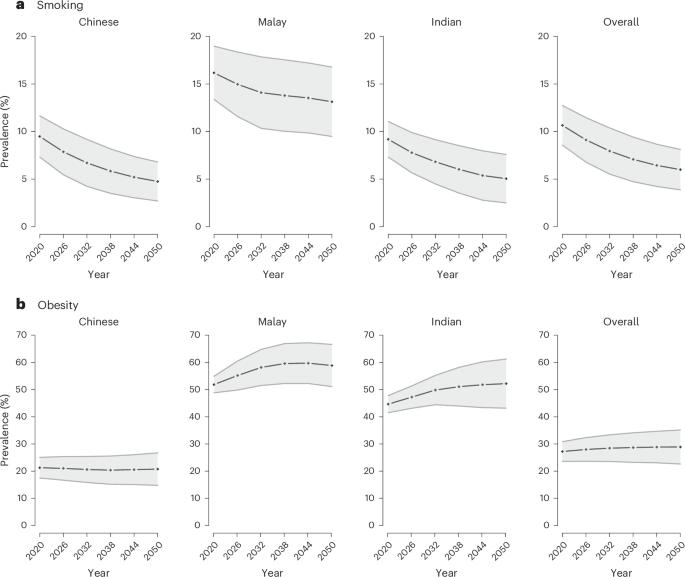Disease burden, lifetime healthcare cost and long-term intervention impact projections among older adults in Singapore
IF 19.4
Q1 CELL BIOLOGY
引用次数: 0
Abstract
Singapore’s rapidly aging population and increasing healthcare demands highlight the need for projections to inform policy planning. Here we adapted a previously published dynamic Markov microsimulation model, the Future Elderly Model, to estimate disease trajectories and healthcare expenditure among adults aged 51 years and older in Singapore. The model simulated four long-term lifestyle interventions aligned with the Healthier SG program from 2020 to 2050. Our projections indicate an increasing prevalence of chronic conditions, comorbidities, obesity and disabilities, with ethnic differences. The projected lifetime healthcare expenditure is the highest among Indians (US $93,900; 95% credible interval (CI), US $68,900–119,000), followed by the Chinese (US $75,700; 95% CI, US $57,600–93,800) and Malays (US $70,000; 95% CI, US $52,000–88,000). Despite having a higher chronic disease burden, Malays are expected to incur lower lifetime expenditure due to their shorter life expectancy. Implementing all 4 interventions could save US $505 million (95% CI, US $462–547 million) in healthcare use by 2050. Sustained lifestyle interventions may moderate the increase in future burdens. Policy strategies should prioritize preventive care tailored to the specific needs of diverse population subgroups. Population aging presents challenges for healthcare and social care systems in ensuring that services are available for older adults. Here the authors performed a Singapore-based simulation study that projects rising chronic disease prevalence and healthcare costs, showing that long-term lifestyle interventions can moderate the increase in future diseases and healthcare spending by 2050.

新加坡老年人的疾病负担、终生医疗保健费用和长期干预影响预测。
新加坡迅速老龄化的人口和不断增长的医疗保健需求突出了预测为政策规划提供信息的必要性。在这里,我们采用了先前发表的动态马尔可夫微观模拟模型,即未来老年人模型,来估计新加坡51岁及以上成年人的疾病轨迹和医疗保健支出。该模型模拟了四种长期生活方式干预措施,与2020年至2050年的健康SG计划相一致。我们的预测表明,慢性疾病、合并症、肥胖和残疾的患病率随着种族差异而增加。预计终生医疗保健支出在印度人中最高(93,900美元;95%可信区间(CI)为68,900-119,000美元),其次是中国人(75,700美元;95%置信区间,57,600-93,800美元)和马来人(70,000美元;95% ci, 52,000-88,000美元)。尽管马来人的慢性疾病负担较高,但由于预期寿命较短,预计终生支出较低。到2050年,实施所有4种干预措施可节省5.05亿美元(95%置信区间,4.62 - 5.47亿美元)的医疗保健使用。持续的生活方式干预可能会缓和未来负担的增加。政策战略应优先考虑针对不同人口群体具体需求的预防保健。
本文章由计算机程序翻译,如有差异,请以英文原文为准。
求助全文
约1分钟内获得全文
求助全文

 求助内容:
求助内容: 应助结果提醒方式:
应助结果提醒方式:


